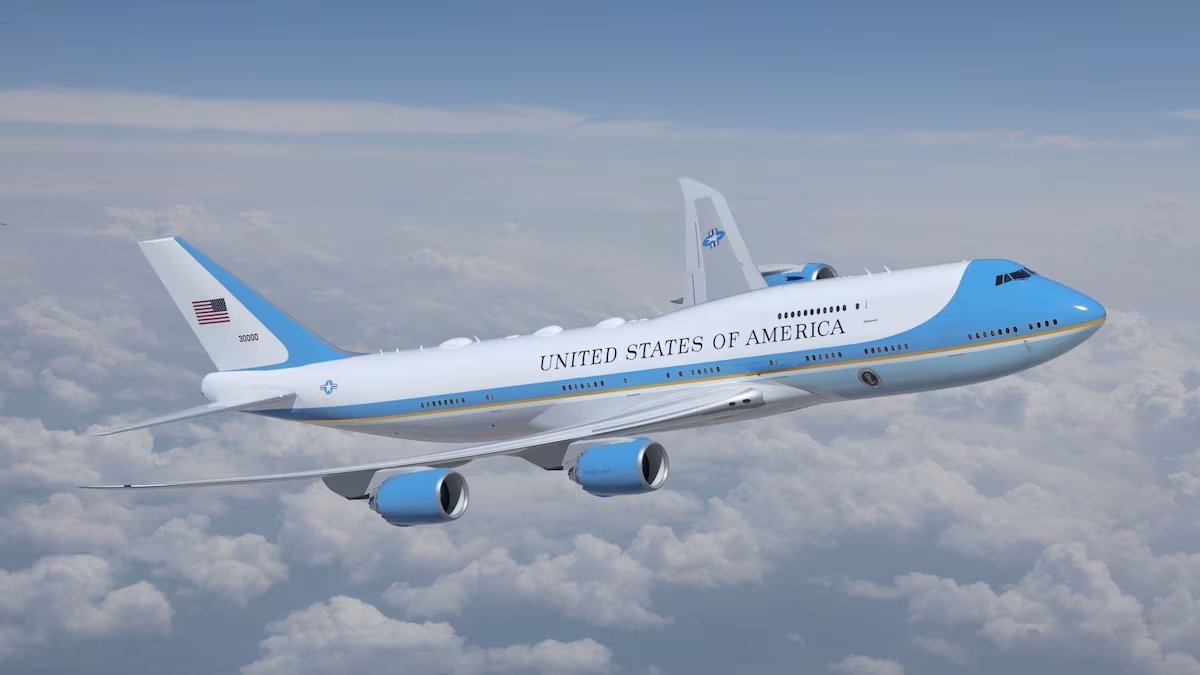The Four Hearts of Air Force One: Understanding Its Powerful Engines
The Engine Count: Four for Unwavering Reliability
This four-engine configuration isn't unique to Air Force One; it's a hallmark of the Boeing 747 platform upon which the presidential aircraft are based. However, for the VC-25A, these engines are heavily modified to meet stringent military requirements. The redundancy provided by having four engines means the aircraft can continue flying safely, and even land, should one or even two engines fail. That's a non-negotiable feature for an aircraft that might need to operate in challenging environments or under pressure.
Powering the President's Flight
These aren't just any engines; they are high-bypass turbofans. What does that mean in plain English? Essentially, they're incredibly efficient. They push a large volume of air through the engine, mixing it with the hot exhaust from combustion. This process generates immense thrust while also being quieter and more fuel-efficient than older engine designs. For the VC-25A, each of these engines can produce around 56,700 pounds of thrust. When all four are working in concert, they provide over 226,000 pounds of total thrust, enough to get a massive aircraft, weighing over 800,000 pounds when fully loaded, off the ground and cruising at speeds of about 630 mph. It's a testament to the engineering prowess that allows such a heavy machine to fly so far and so fast.
The Manufacturer: General Electric's Enduring Partnership
The CF6 family of engines has been a workhorse in the aviation industry for decades, powering a wide range of large commercial aircraft. Its selection for Air Force One speaks volumes about its reputation for reliability and durability. GE's commitment to this platform ensures that the engines are not only powerful but also incredibly robust, capable of withstanding the rigors of constant use and diverse operating conditions. It's this kind of proven performance that makes GE the trusted choice for such a critical application.
Why GE? A Legacy of Reliability
The choice of GE isn't arbitrary. The CF6-80C2B1 engine is known for its exceptional durability. We're talking about a mean time between overhauls that often exceeds 20,000 flight hours. That's a huge number, indicating how infrequently these engines need major servicing. This longevity is crucial for an aircraft that operates globally and needs to be ready at a moment's notice.
Furthermore, these engines are built to perform in extreme environments. Whether it's the biting cold of an Arctic takeoff or the intense heat of a desert landing, the CF6 is designed to handle it. Advanced materials, like single-crystal turbine blades that can endure temperatures up to 2,500°F, are integral to their design. This focus on resilience and performance is precisely what the SlashGear article highlights: the engines are designed with durability in mind, enabling Air Force One to move "as swiftly and as long as possible."
Durability: More Than Just a Buzzword
When we talk about durability for Air Force One's engines, it's not just about lasting a long time between services. It's about survivability. These engines are engineered with features that go far beyond what you'd find on a typical commercial airliner. Think about self-sealing fuel lines, systems designed to suppress explosions, and even shielding against electromagnetic pulses (EMP). These are not standard features, but they are absolutely essential for an aircraft that serves as a flying command center for the leader of the free world.
The thrust-to-weight ratio is another critical factor. A ratio of around 5.5:1 means the engines can provide significant acceleration, allowing the heavily laden aircraft to climb quickly and maintain speed, even when packed with secure communications equipment, defensive systems, and a full complement of personnel. And while fuel efficiency is always a consideration, for Air Force One, it's balanced with the absolute need for power and reliability. It's a delicate engineering dance.
The Future of Presidential Propulsion
While the GE CF6 engines have served admirably for decades, the world of aviation is always evolving. There are ongoing discussions and plans for the next generation of Air Force One, which will undoubtedly feature even more advanced propulsion systems. These future engines will likely incorporate the latest in materials science, fuel efficiency, and perhaps even alternative fuels, aligning with broader sustainability goals.
But for now, the four GE CF6-80C2B1 engines on the current VC-25A fleet remain the backbone of presidential air travel. They are a testament to robust engineering, a symbol of American technological capability, and the quiet, powerful force that enables the President to conduct affairs of state from anywhere in the world. It's pretty amazing to think about the sheer power and reliability packed into those massive engines, isn't it?
